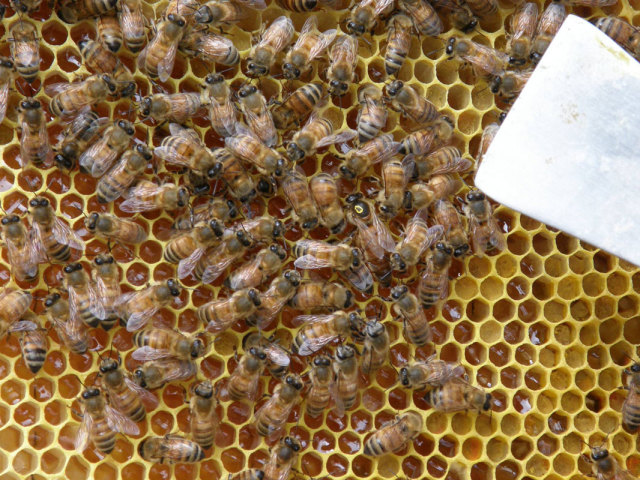Bees Can Recognize Human Faces
http://www.scientificamerican.com/podcast/episode.cfm?id=bees-can-recognize-human-faces-10-02-01
a few tidbits
Bees Can Recognize Human Faces
http://www.scientificamerican.com/podcast/episode.cfm?id=bees-can-recognize-human-faces-10-02-01
Lots of activity in the bee yard this weekend…
Found some queen cups and cells in Macintosh – here you can see a new queen is chewing her way out of the bottom of the circled cell.
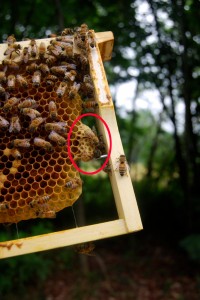
The bees have started capping honey for the winter. Hope there will be enough good weather and plants for them to make some for us, too.
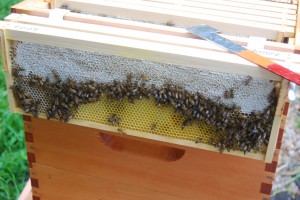
With the new queen emerging from Mac, I split her off into her own “nuc” (nucleus hive). The newest one is the third from the left with the blue-colored center box. So we are up to 3 full size hives (for honey production) and 3 nucs (to overwinter for full hives next season).
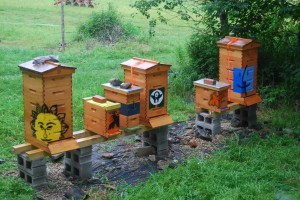
My friend Juli thought she might have a swarm of honey bees in a lobster buoy on her front porch (this is, after all, Maine).
So, I went over to look at lunchtime, as the prospect of a swarm to plop in a nuc (nucleus hive) was appealing (free-bees).
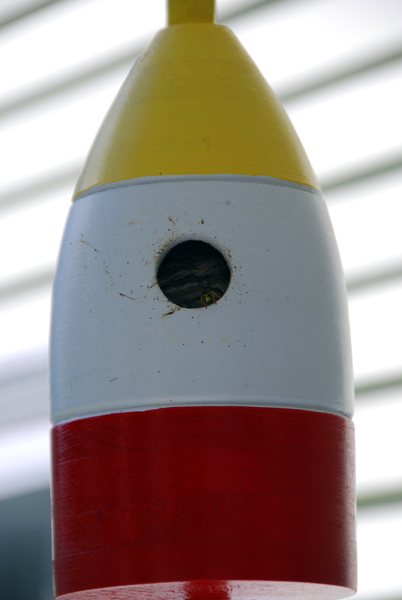
Sadly, she had nasty yellow jackets (http://en.wikipedia.org/wiki/Yellow_jacket)
For those of you who think you might have a swarm of bees, here are a few clues (in this particular instance):
• The yellow jacket nest looks a bit like like gray paper (see detail photo below)
vs. a honey bee hive, where they would build hexagonal comb
http://en.wikipedia.org/wiki/File:Honey_comb.jpg
• Yellow jackets are (mostly) shiny and the yellow is VERY yellow – their abdomens look kind of like armor.
http://en.wikipedia.org/wiki/File:European_wasp_white_bg.jpg
• Honey bees are fuzzy all over and more of an orange/tan color
http://en.wikipedia.org/wiki/File:Drinking_Bee.jpg
• Honey bees are a lot “nicer” (yes, I am biased) in that they are not really interested in stinging you – if they sting you they will die – they will only sting if they feel you are threatening the entire hive.
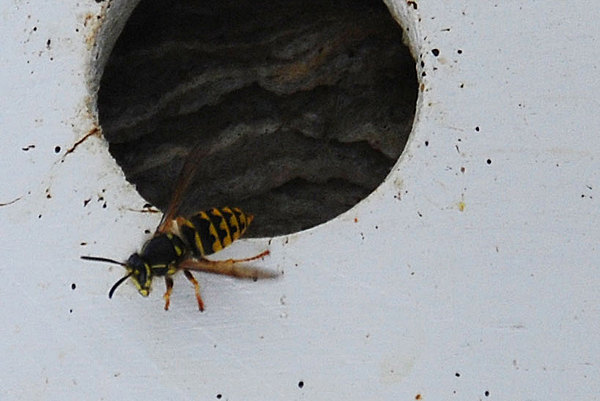
Damn ants took advantage of my two weak nuc (nucleus) hives and crawled up and infested the place. They were there to steal the 1:1 sugar:water syrup that I had left to feed weak bees, as it was going to be a rainy week. The nucs were made with bees from one of my stronger hives (James) and super-fancy queens that were bred by Michael Palmer in Vermont. Acquired the Queens at a Nuc Workshop run by the Cumberland County Beekeepers Association‘s own Erin Forbes and Larry Peiffer. A very helpful class that I would highly recommend (I think they are going to do it again next year).
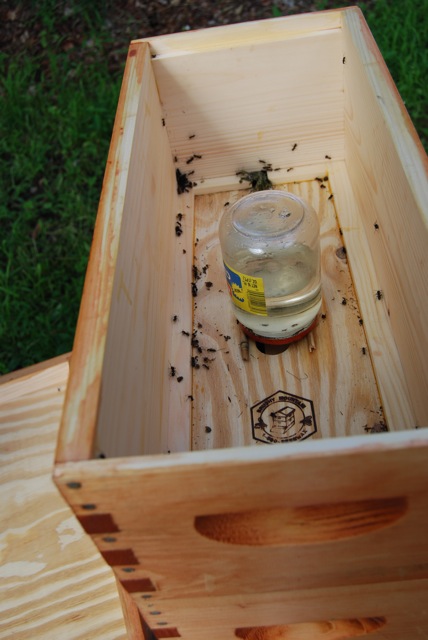
Anyway, back to getting rid of the ants. Ground cinnamon sprinkled around the base of the hive and inside the top of the hive are a well know way of keeping the ants at bay – but I learned a super-nifty trick from Erin – I propped the entire nucs up on cinnamon sticks, too (see the red circles in the photo). That way any ant that wants to steal from my bees will have to physically traverse the cinnamon (which apparently they abhor). Take that, ants!

We got two more hives installed over the weekend (Mac & Rodger) and it is starting to look like a proper artisanal apiary.
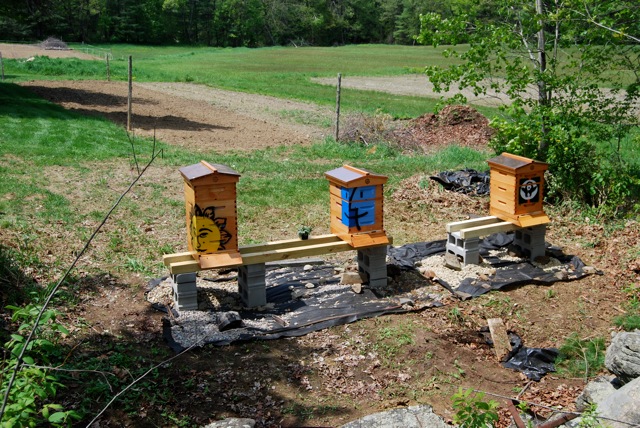
While looking through Mac (the stronger of the two hives) we were able to spot the queen.
Seen below you can tell her by her elongated abdomen and the remnants of yellow paint on her thorax. The paint color indicates that she was born in 2007.
